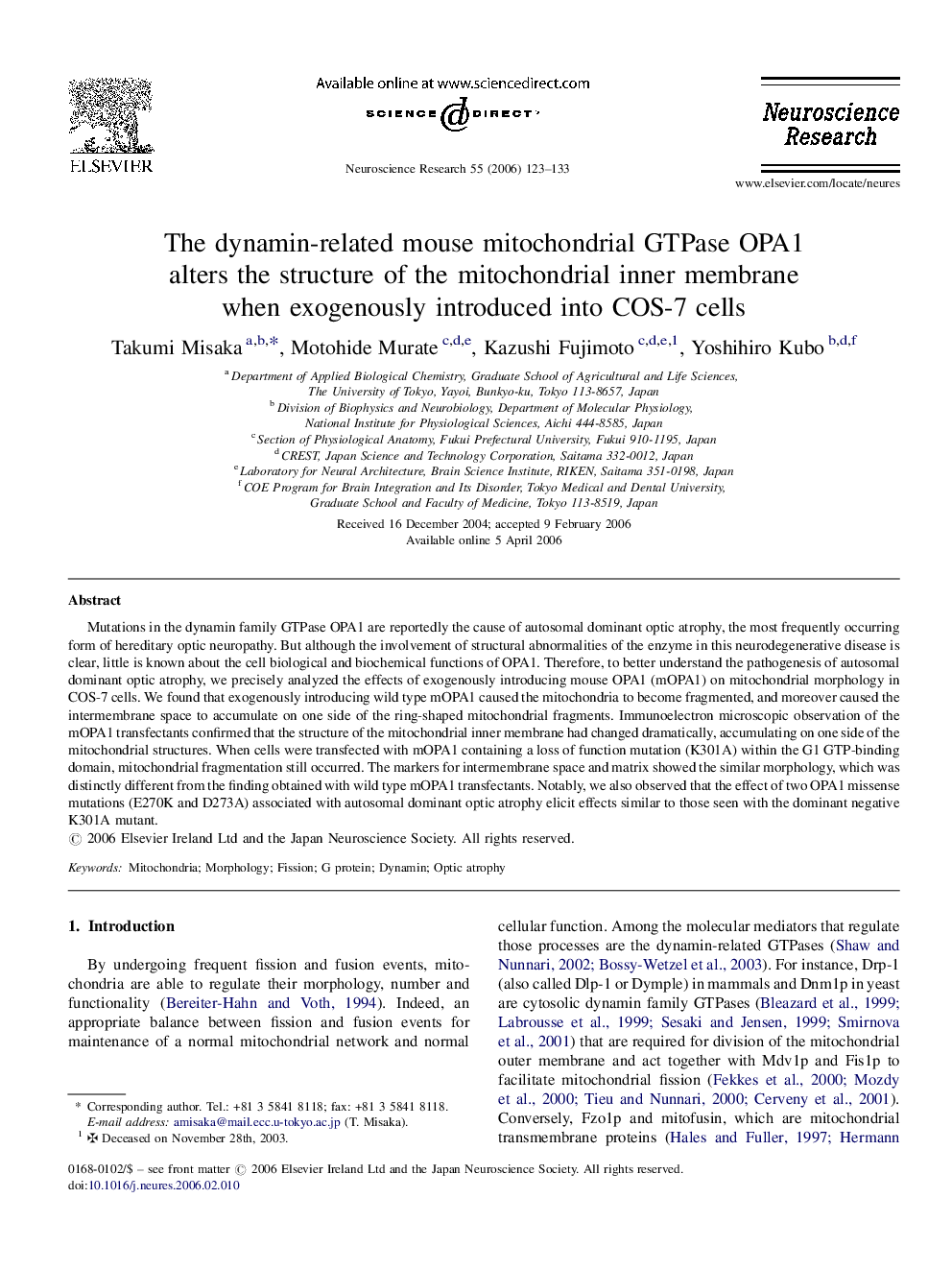| Article ID | Journal | Published Year | Pages | File Type |
|---|---|---|---|---|
| 4352418 | Neuroscience Research | 2006 | 11 Pages |
Mutations in the dynamin family GTPase OPA1 are reportedly the cause of autosomal dominant optic atrophy, the most frequently occurring form of hereditary optic neuropathy. But although the involvement of structural abnormalities of the enzyme in this neurodegenerative disease is clear, little is known about the cell biological and biochemical functions of OPA1. Therefore, to better understand the pathogenesis of autosomal dominant optic atrophy, we precisely analyzed the effects of exogenously introducing mouse OPA1 (mOPA1) on mitochondrial morphology in COS-7 cells. We found that exogenously introducing wild type mOPA1 caused the mitochondria to become fragmented, and moreover caused the intermembrane space to accumulate on one side of the ring-shaped mitochondrial fragments. Immunoelectron microscopic observation of the mOPA1 transfectants confirmed that the structure of the mitochondrial inner membrane had changed dramatically, accumulating on one side of the mitochondrial structures. When cells were transfected with mOPA1 containing a loss of function mutation (K301A) within the G1 GTP-binding domain, mitochondrial fragmentation still occurred. The markers for intermembrane space and matrix showed the similar morphology, which was distinctly different from the finding obtained with wild type mOPA1 transfectants. Notably, we also observed that the effect of two OPA1 missense mutations (E270K and D273A) associated with autosomal dominant optic atrophy elicit effects similar to those seen with the dominant negative K301A mutant.
